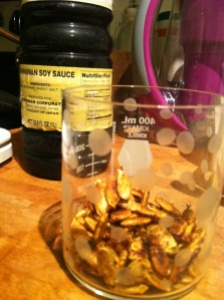Cooking with Kabocha (Japanese pumpkin)
Some people say that Kabocha is similar to butternut squash. Kabocha is an excellent source of Vitamin A which means that it is good for your hair, skin, and eyes. It also helps build your immune system because Vitamin A is supposed to keep your white blood cells healthy.
In Japan Kabocha is served in a variety of ways such as nimono (japanese stew), tempura, salad, croquettes, and many more. Kabocha can also be eaten as a dessert due to the fact that it is naturally sweet!
I used to only see Kabocha in Japanese supermarkets but recently I see them everywhere including whole foods, my local supermarket, even the deli near my apartment! I read something interesting recently, that Kabocha is still growing even after it has been picked. This means that unlike other vegetables which should be eaten soon after they are picked, it is ok for Kabocha to sit for a while (in appropriate temperatures) before it is eaten. In order to bring out the best flavor, it is kept in under controlled temperatures for days before it is sold. ( I am not sure if this is everywhere or not).
The best season to eat Kabocha is Fall and Winter. Although it is still spring, I couldn’t wait. I used one kabocha in three different ways:
Kabocha and mixed vegetables baked with shio-koji: Broccoli, kabocha, shimeji mushrooms, red onion, and shio-koji, olive oil
I used the seeds from the Kabocha and roasted them in a pan. I added some soy sauce to them as well and made onigiri (Japanese rice ball) with them the next day!
Finally, I used the leftover kabocha and mixed it into a thick paste and made yokan with it. It was very simple and only used three ingredients: kanten powder (agar agar powder), maple syrup, almond milk, and kabocha paste!



I’m always impressed by your cooking. 🙂
I love kabocha but I’ve never cooked or had kabocha seeds. I don’t know why but I’ve never thought about cooking them. I should try it sometime!
Where do you usually get kanten powder? Japanese market?